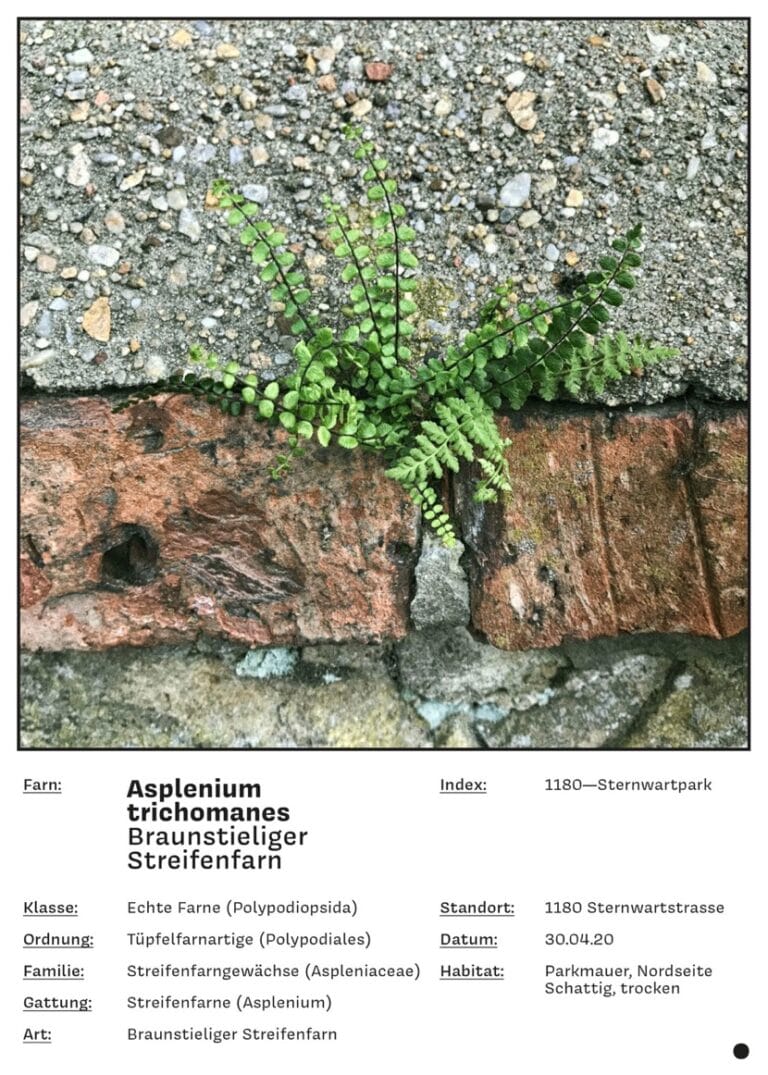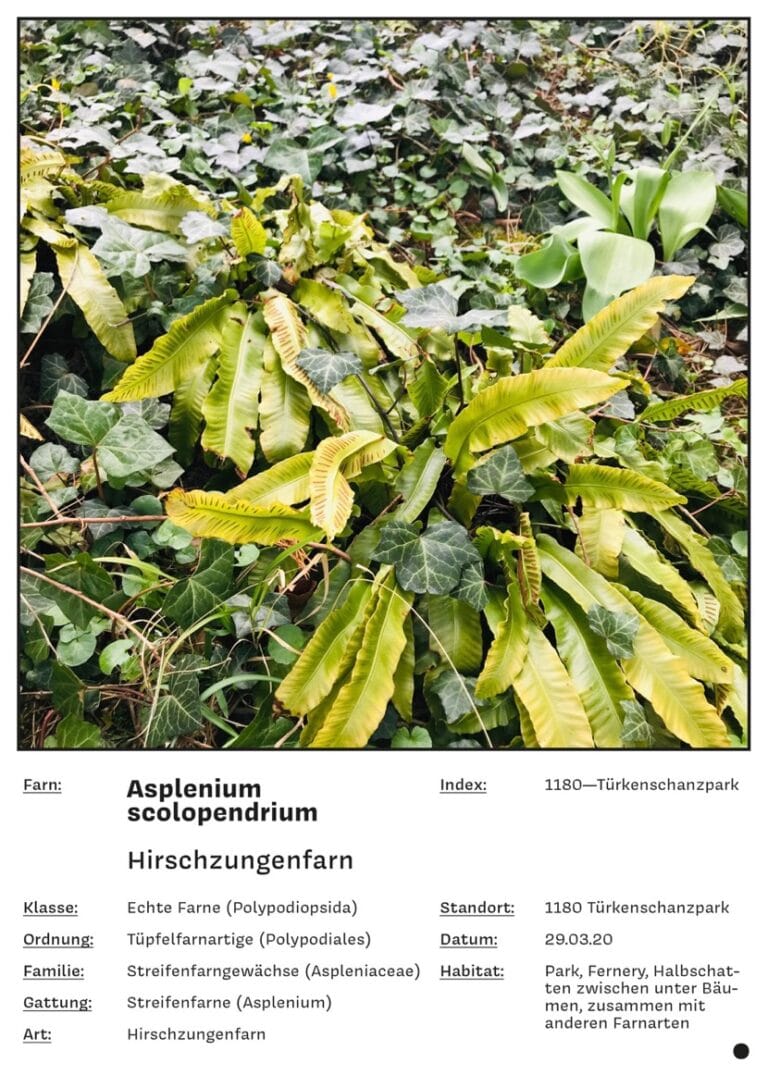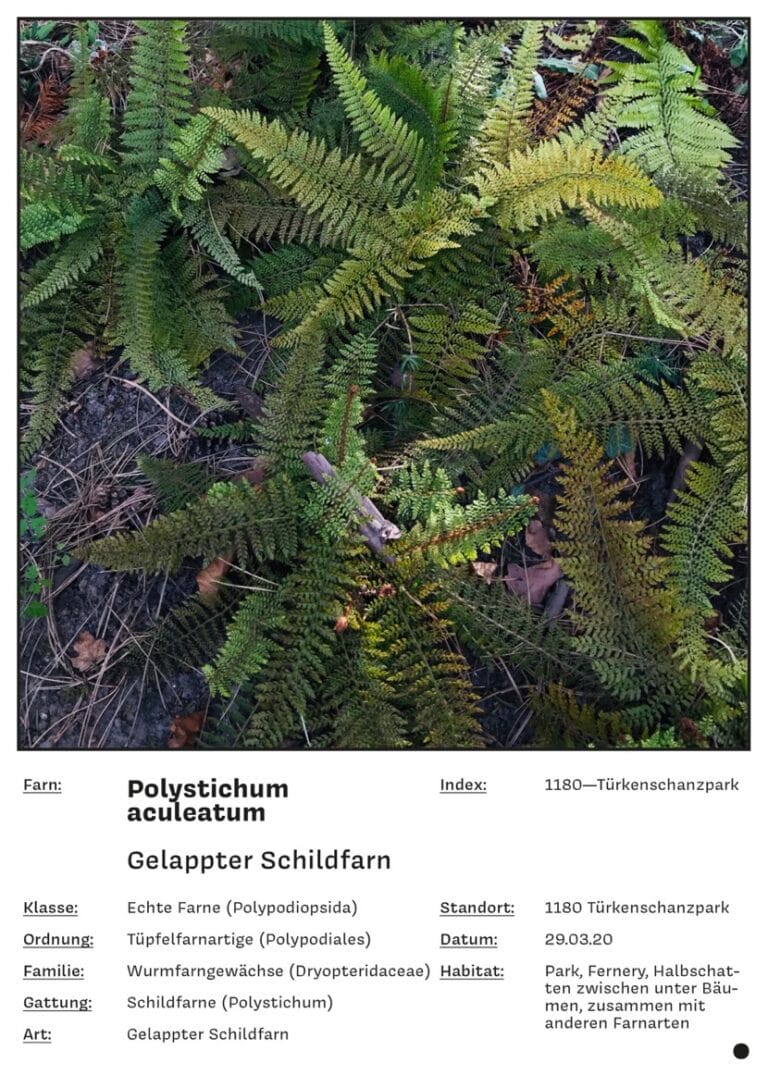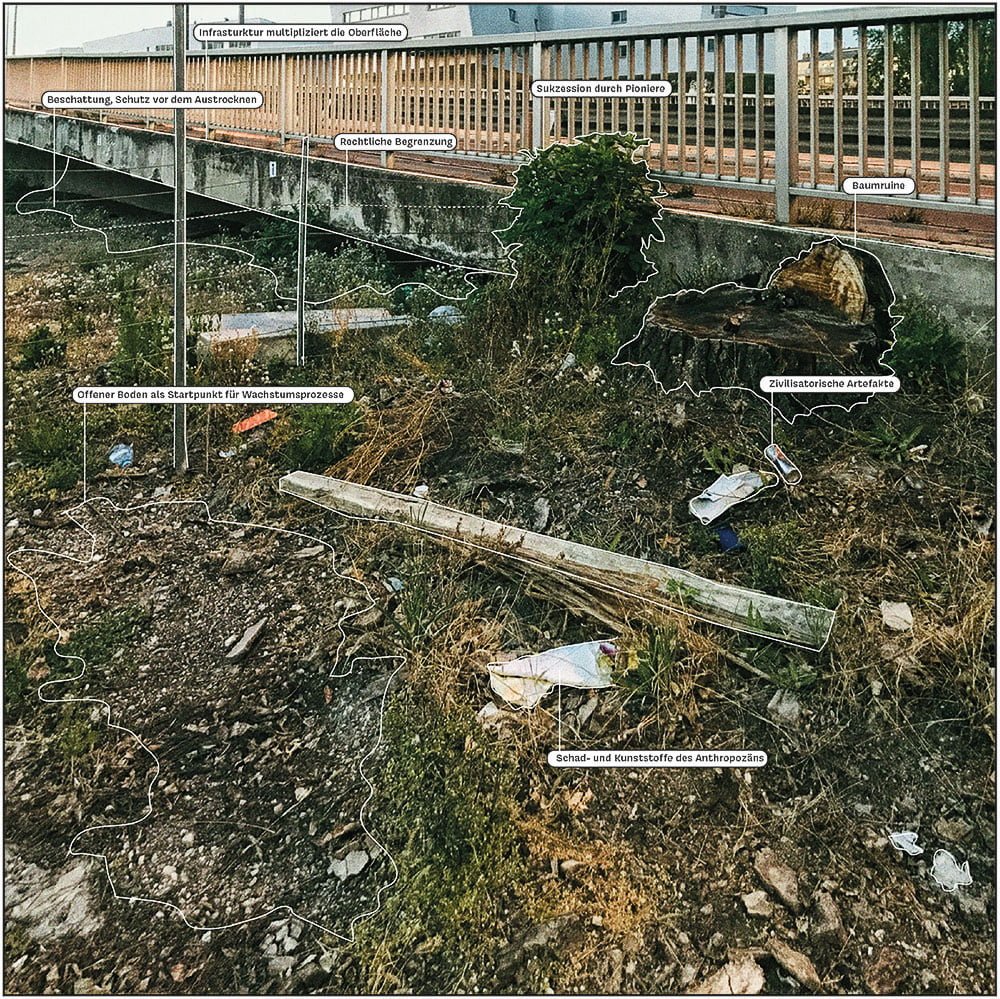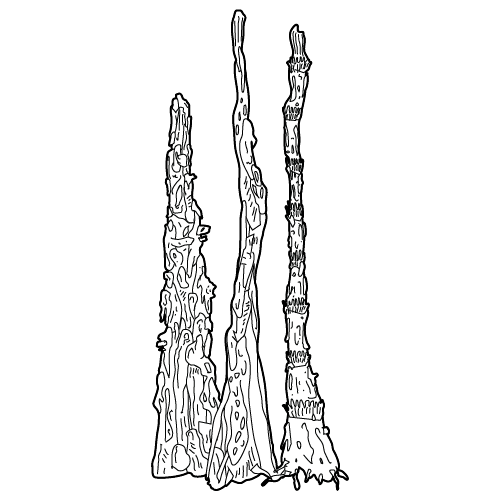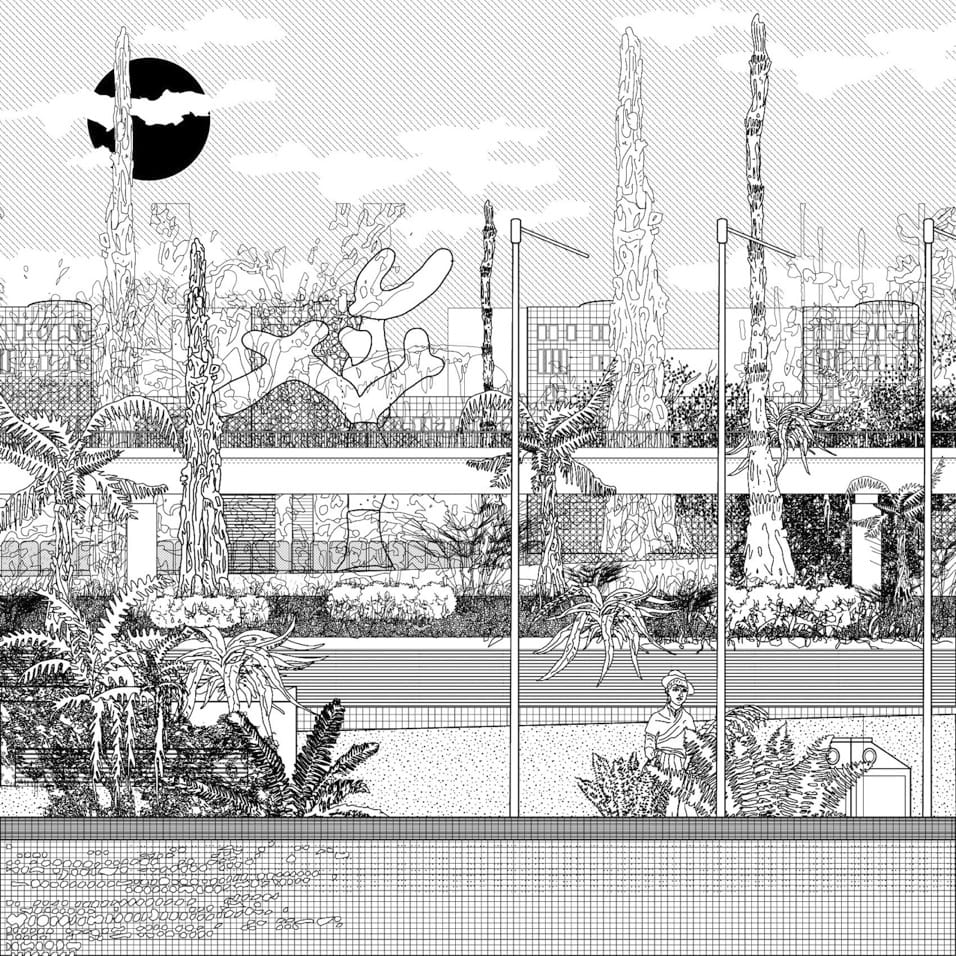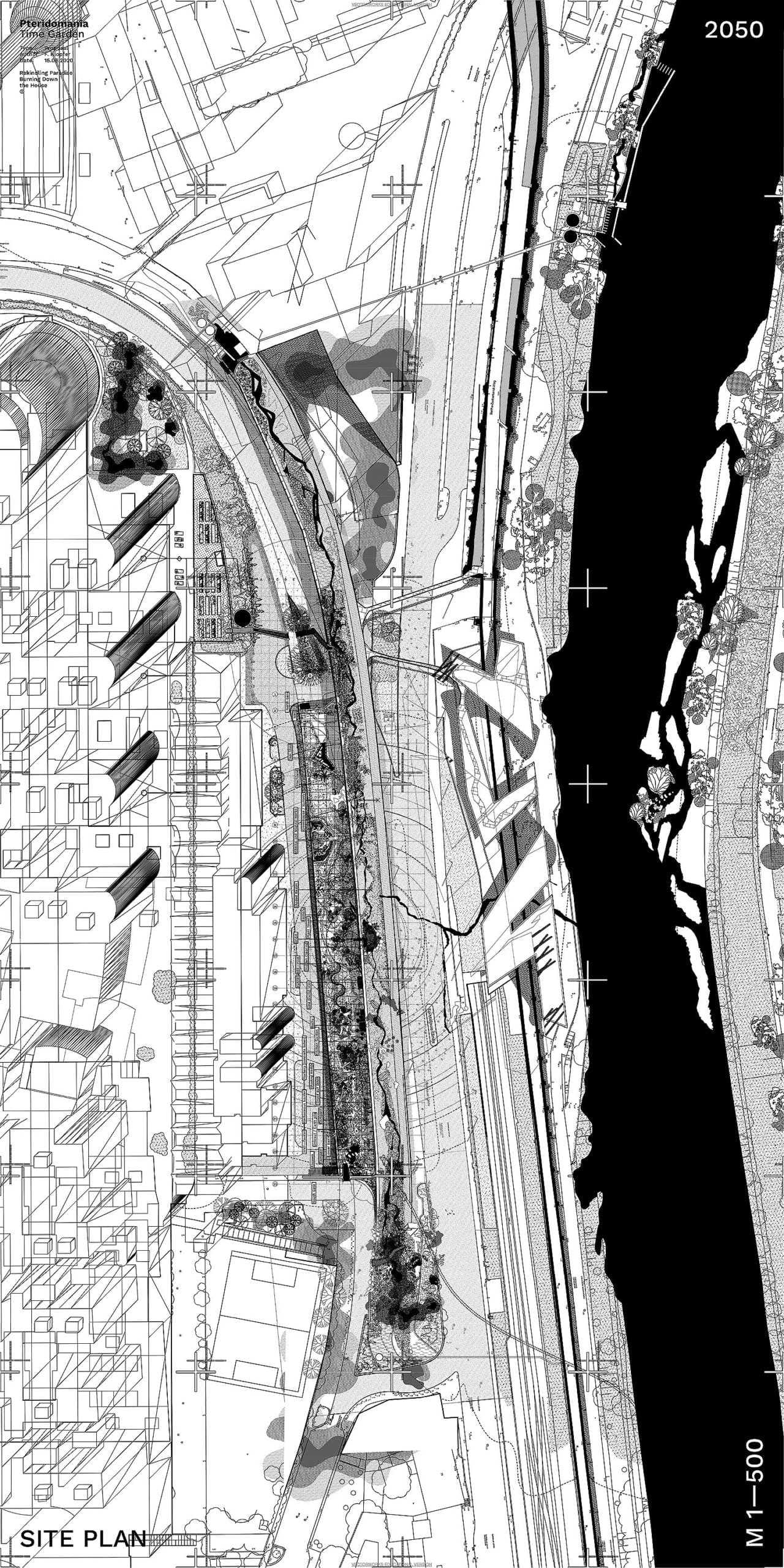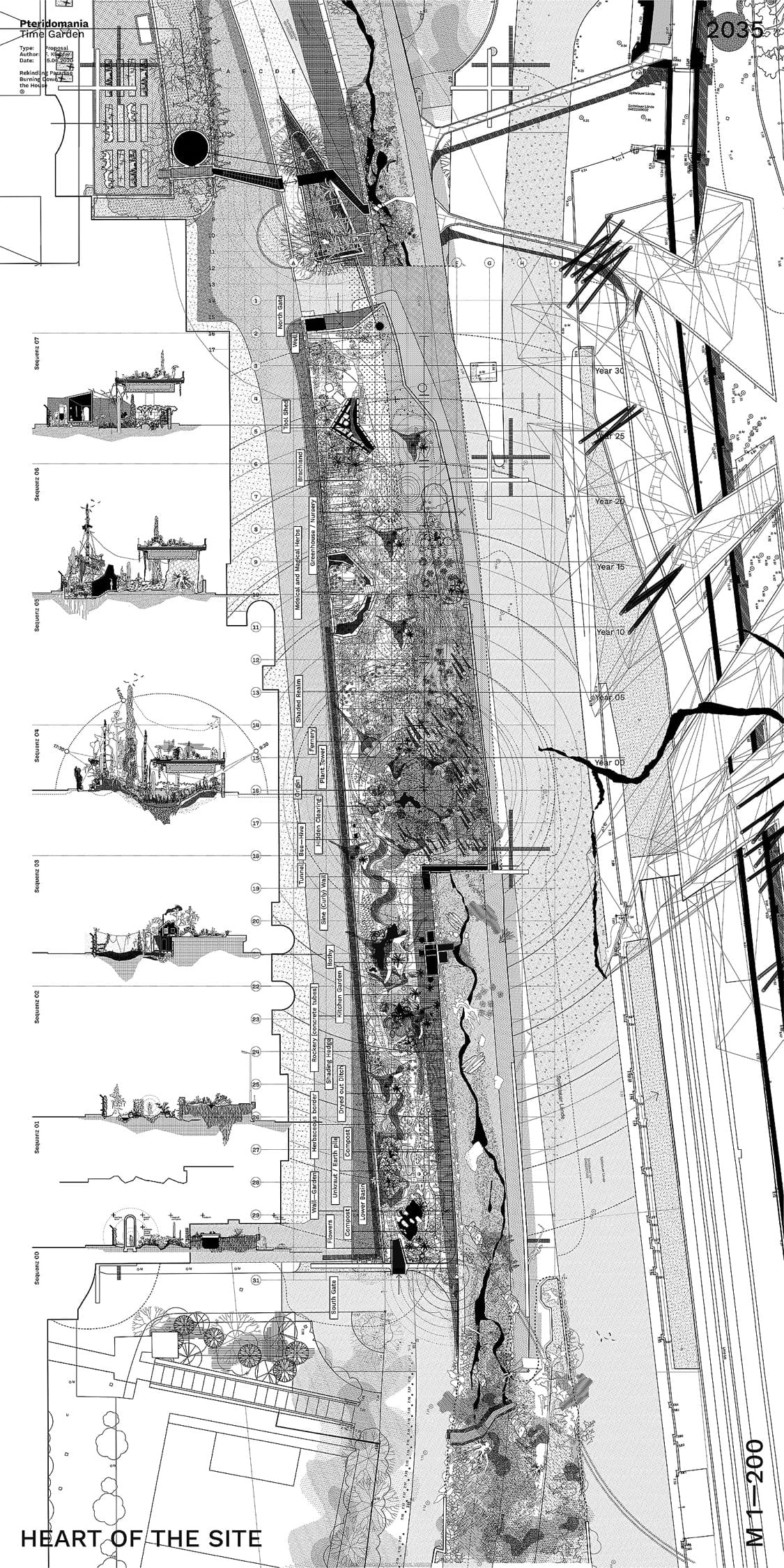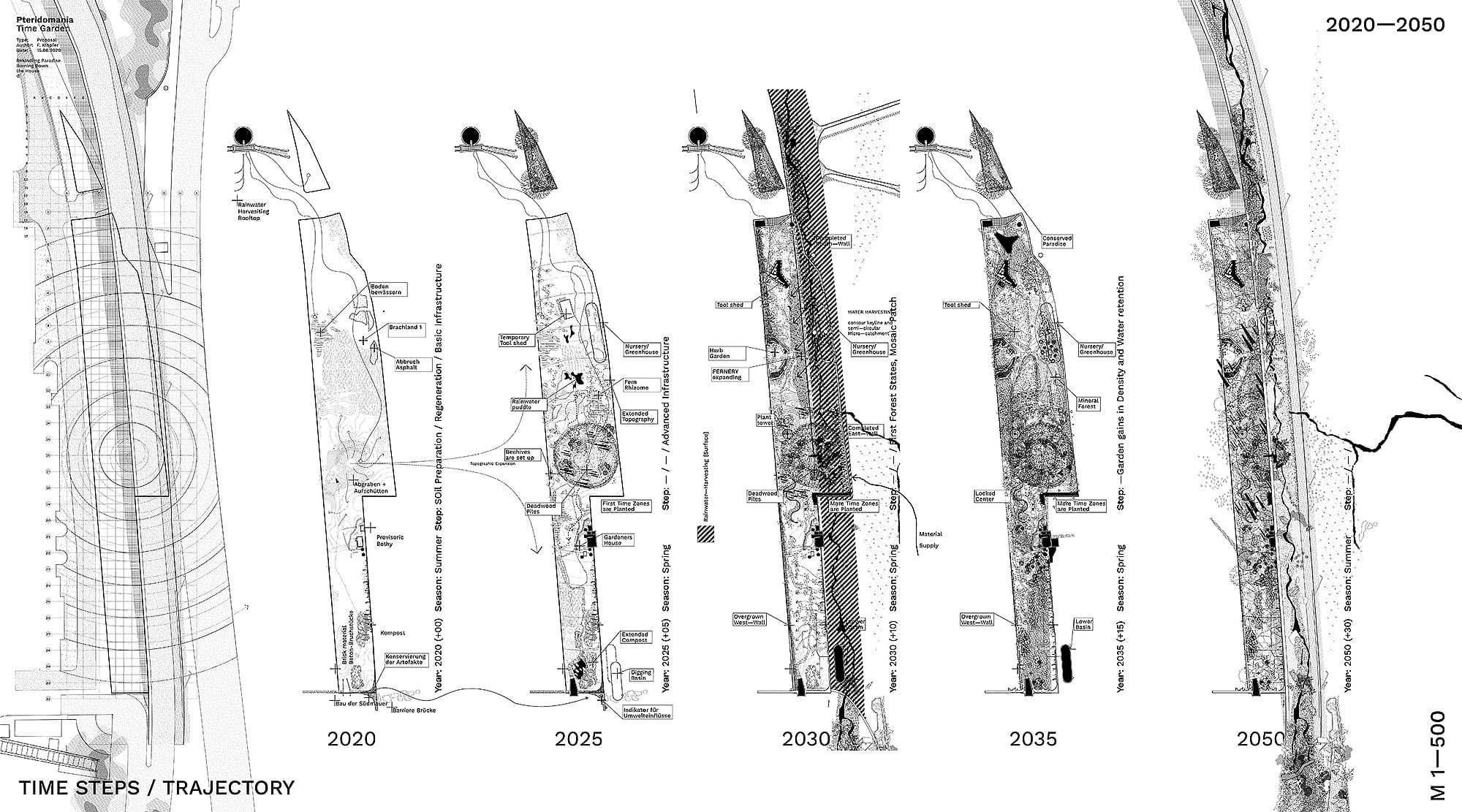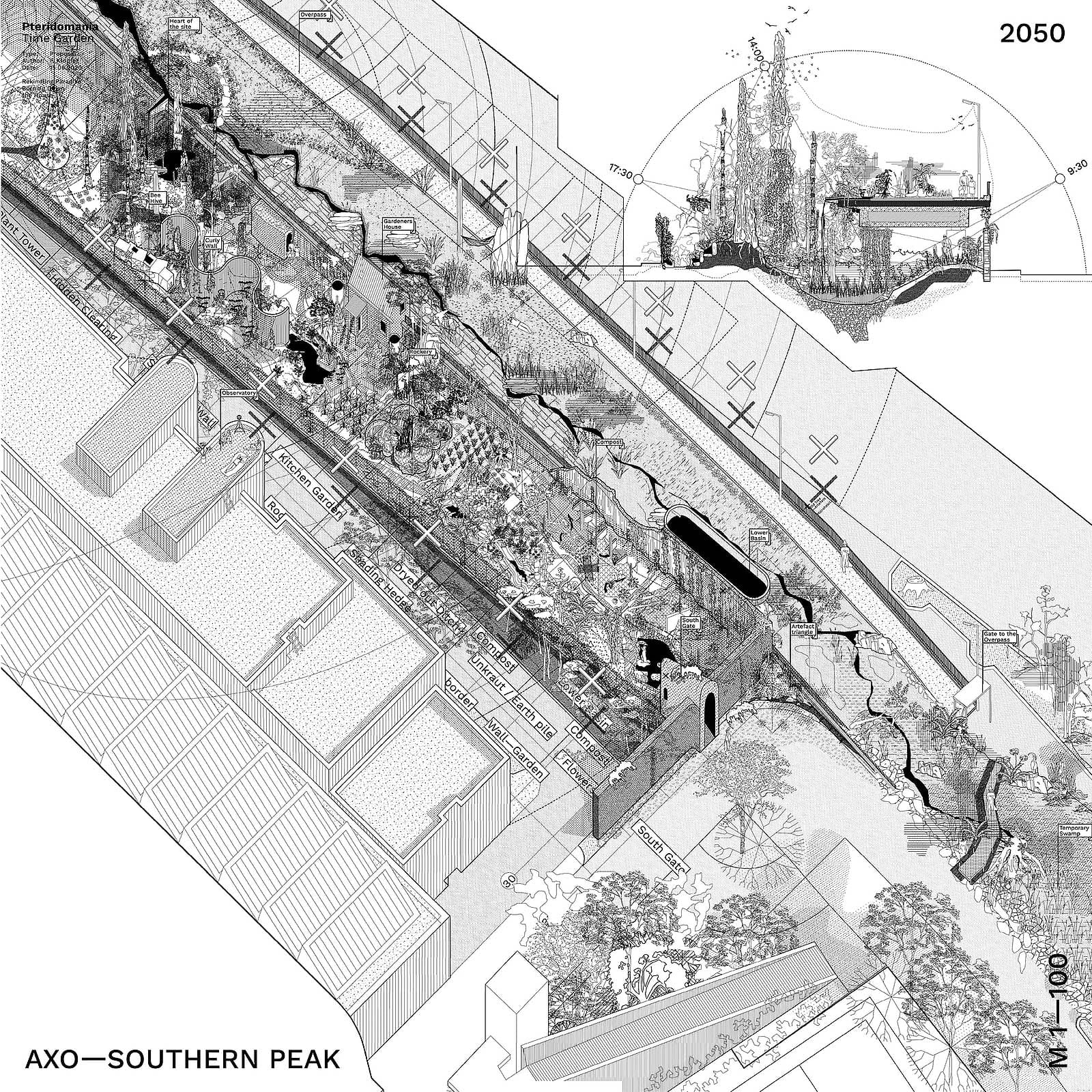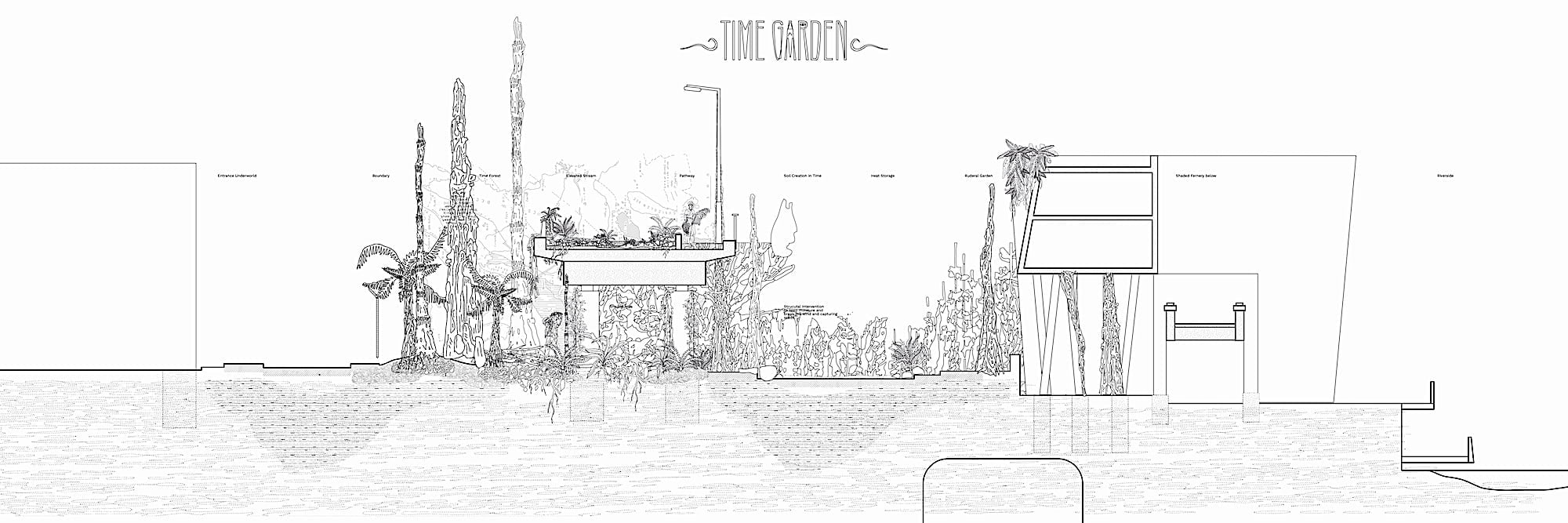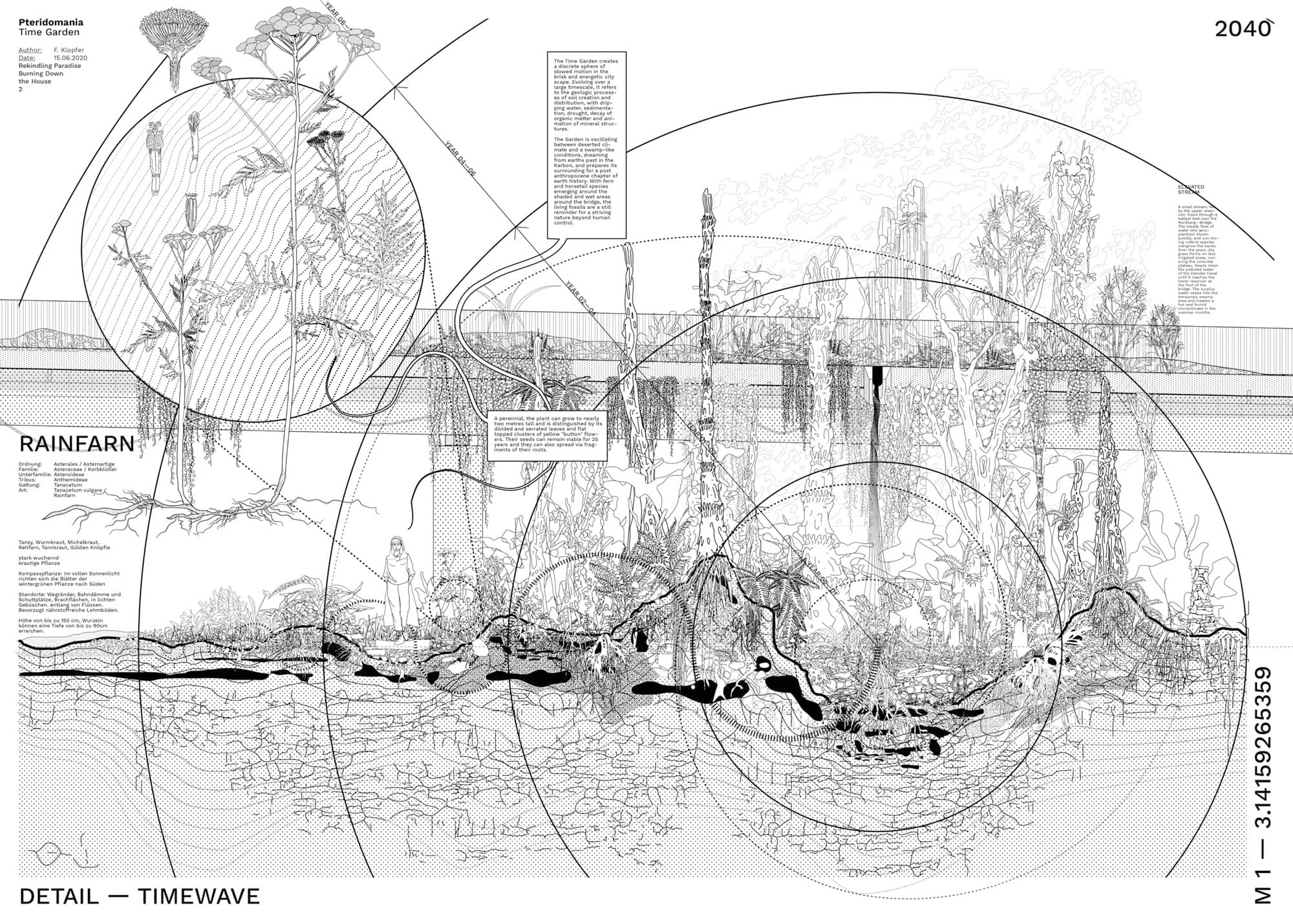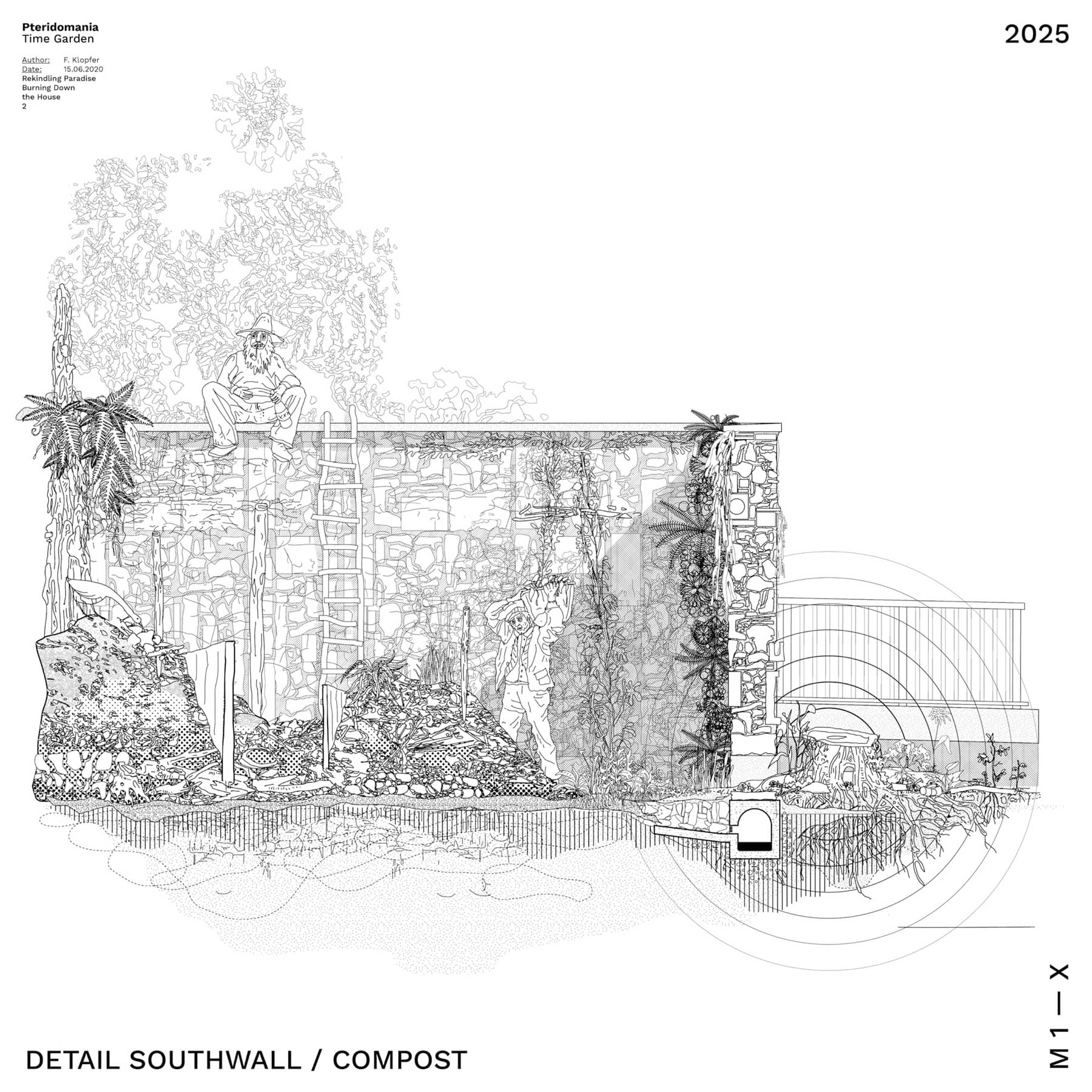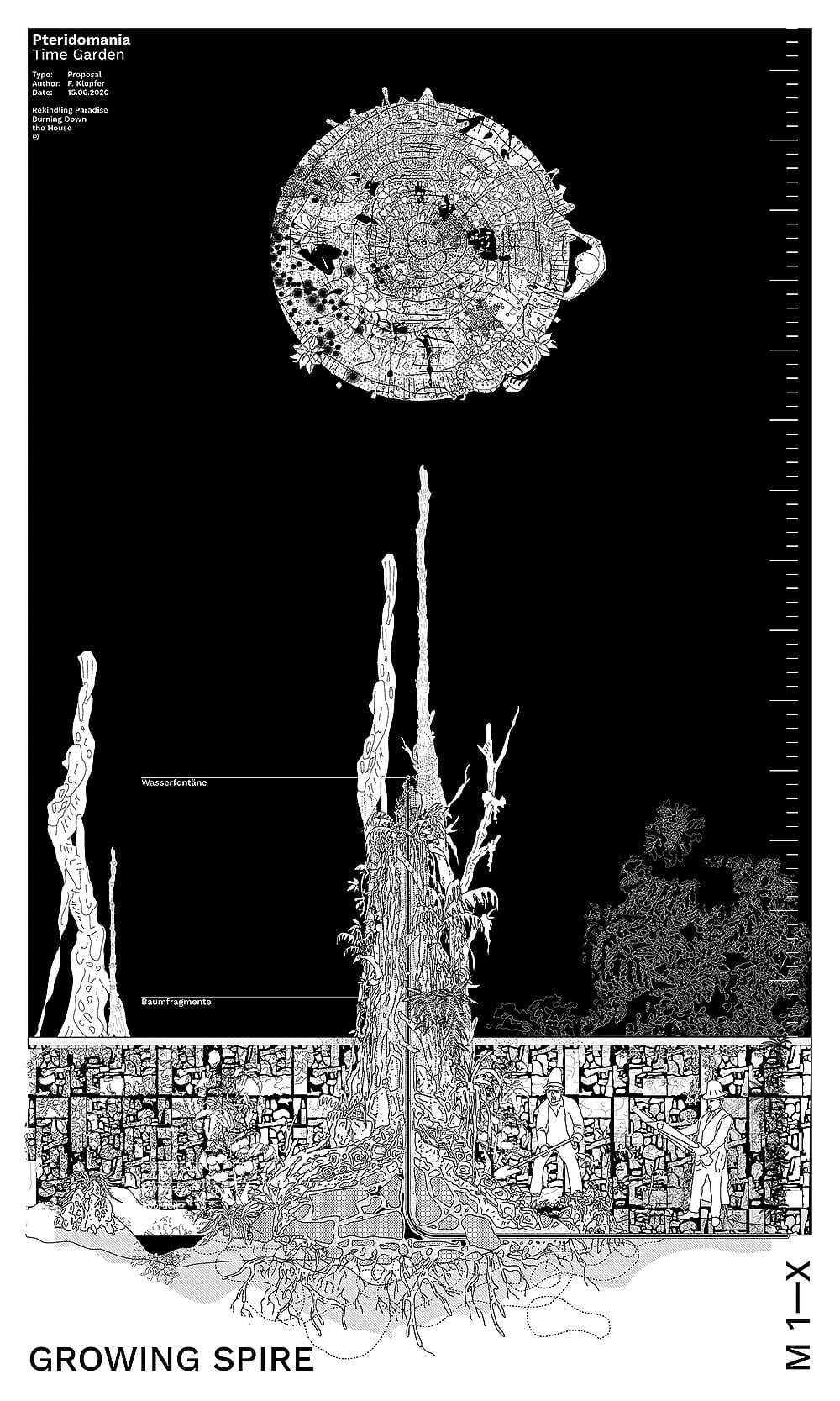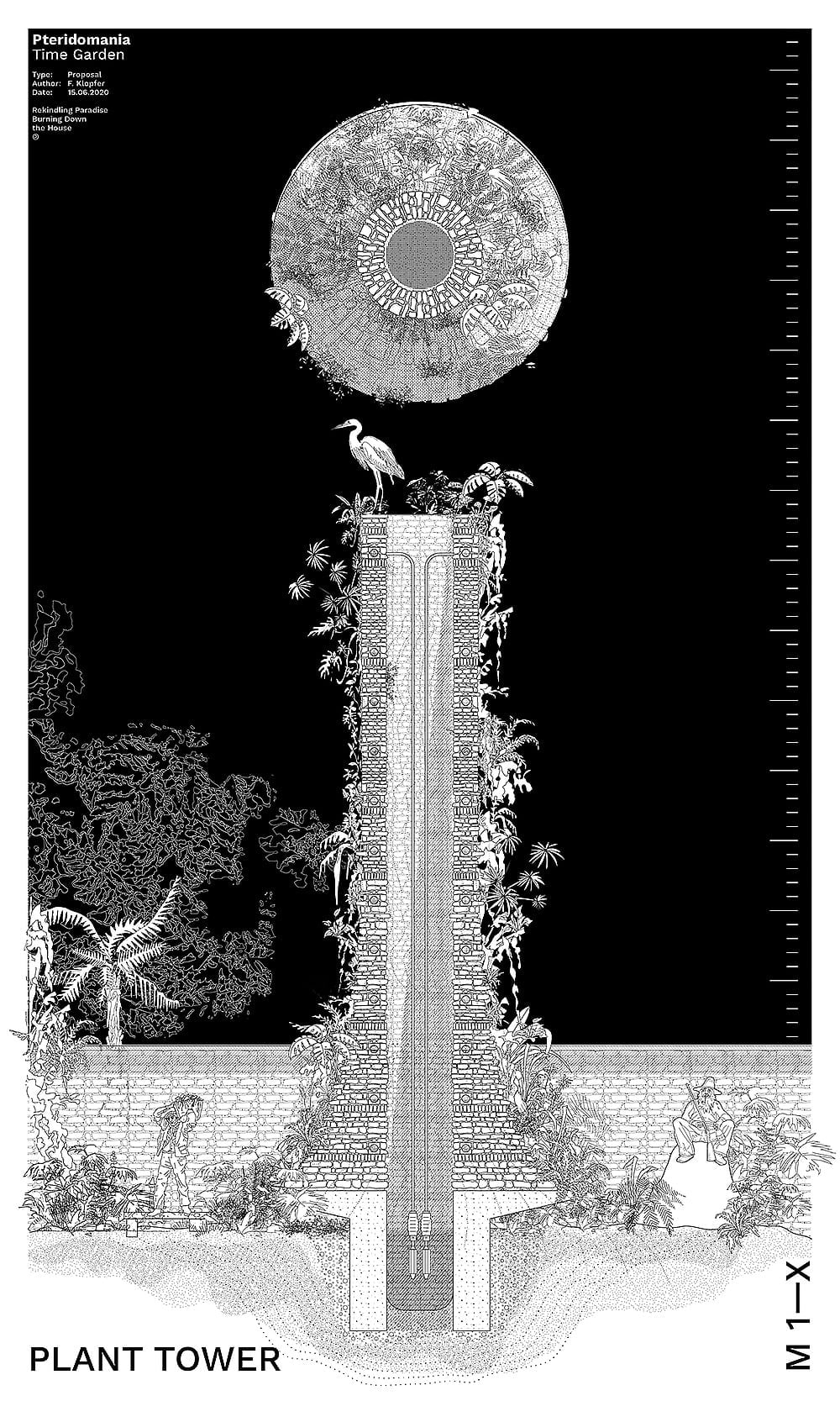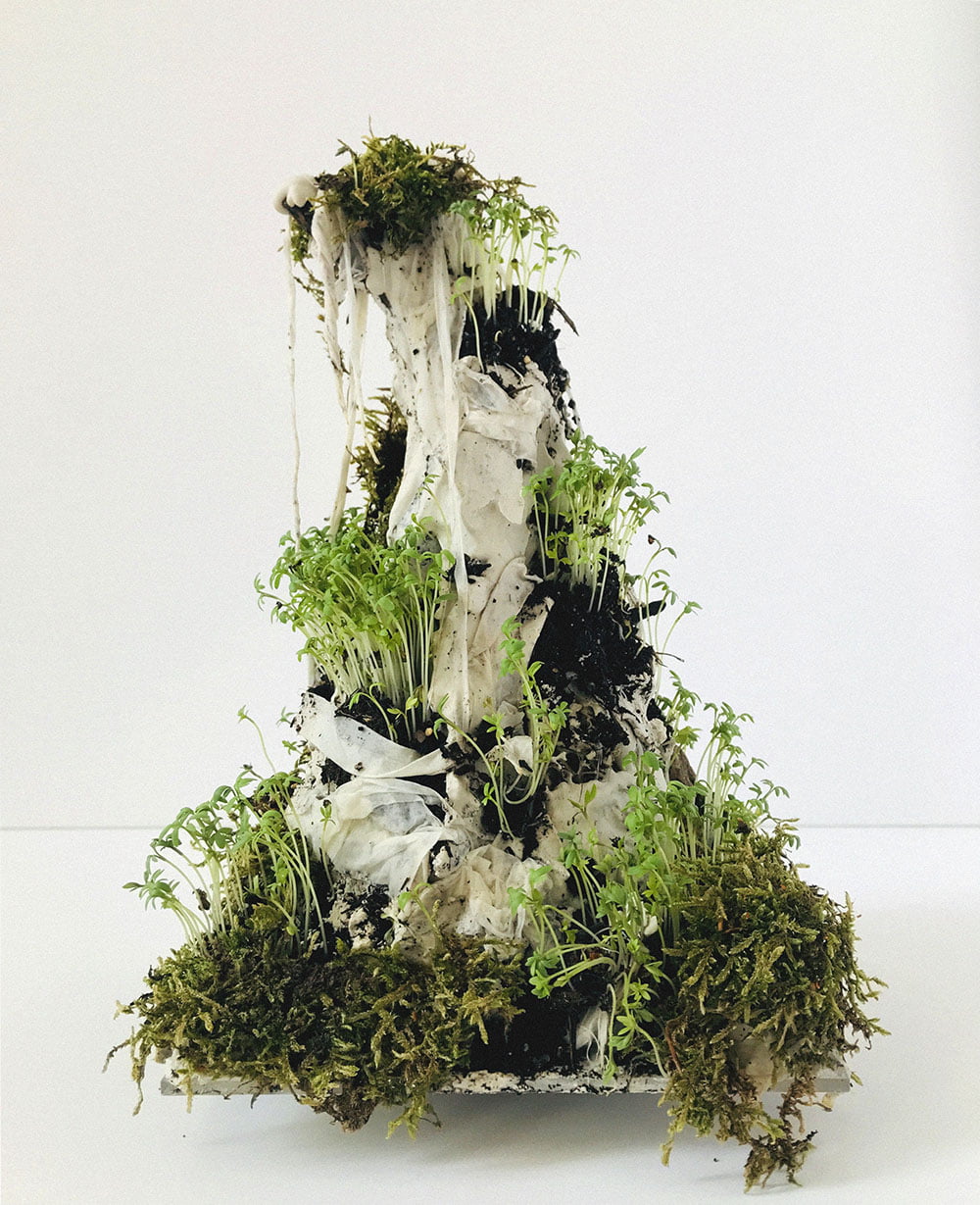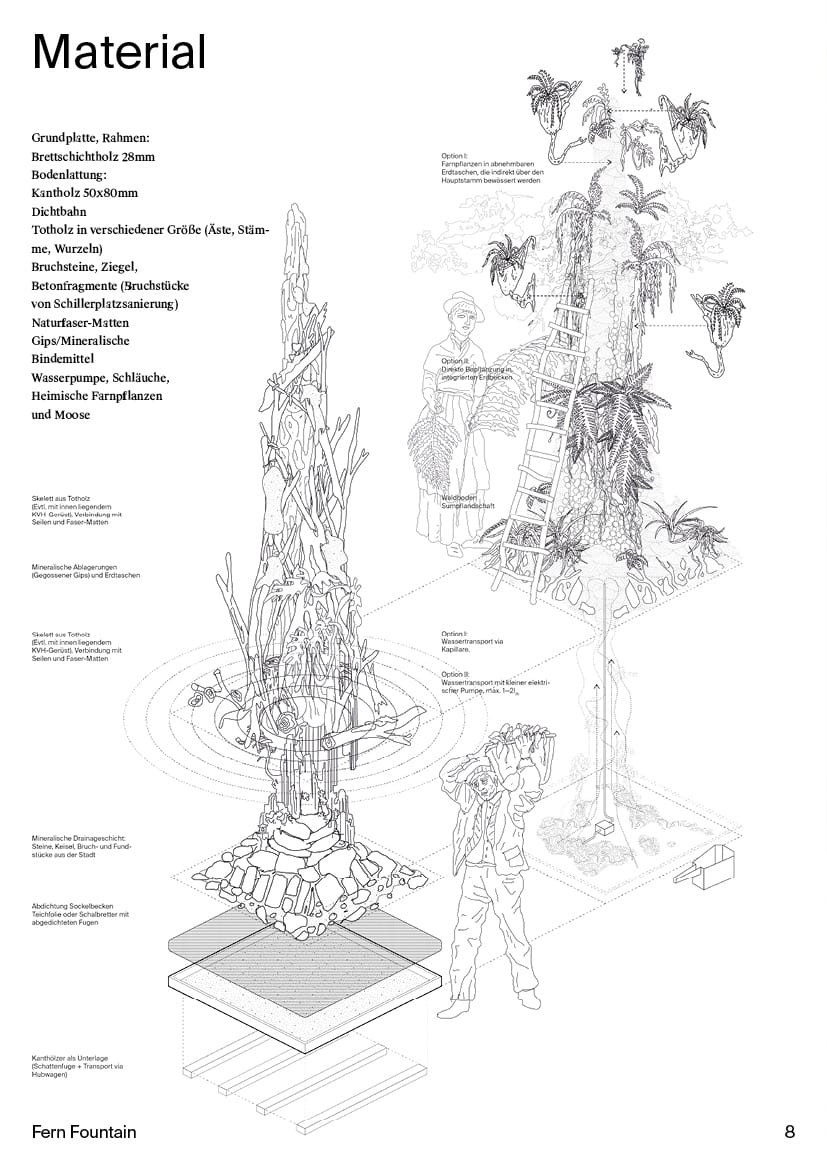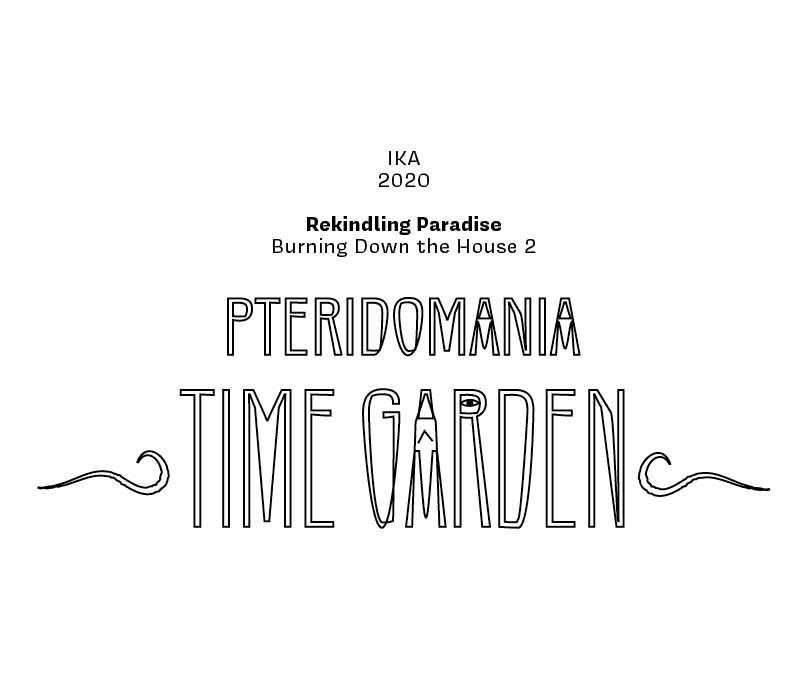
The Fern Garden
As an introverted sphere of calmness and slow motion in a rather hostile and brisk cityscape (traffic, noise, exhaust, heat, concrete), the garden evolves over a geological time scale. It uses measured processes of soil creation and distribution, the dripping of water, sedimentation and climate changes, the decay of organic matter, and the animation of mineral structures. It oscillates between dry and swamp-like conditions — dreaming from the carboniferous and preparing for a post-anthropocentric chapter in Earth’s history. These living fossils emerge slowly in shaded and humid areas under the bridge, a gentle reminder of nature striving for release from human control.
The term ‘Pteridomania’ refers to the craze for ferns in the Victorian era. This ‘Fern-Fever’ emerged after the discovery (at the end of the 18th century) that ferns could be grown and propagated from spores. In the damp, cool climate and the primness of Victorian Society, their shapes, colours, and character allowed a tantalizing glimpse into an exotic and primordial world.
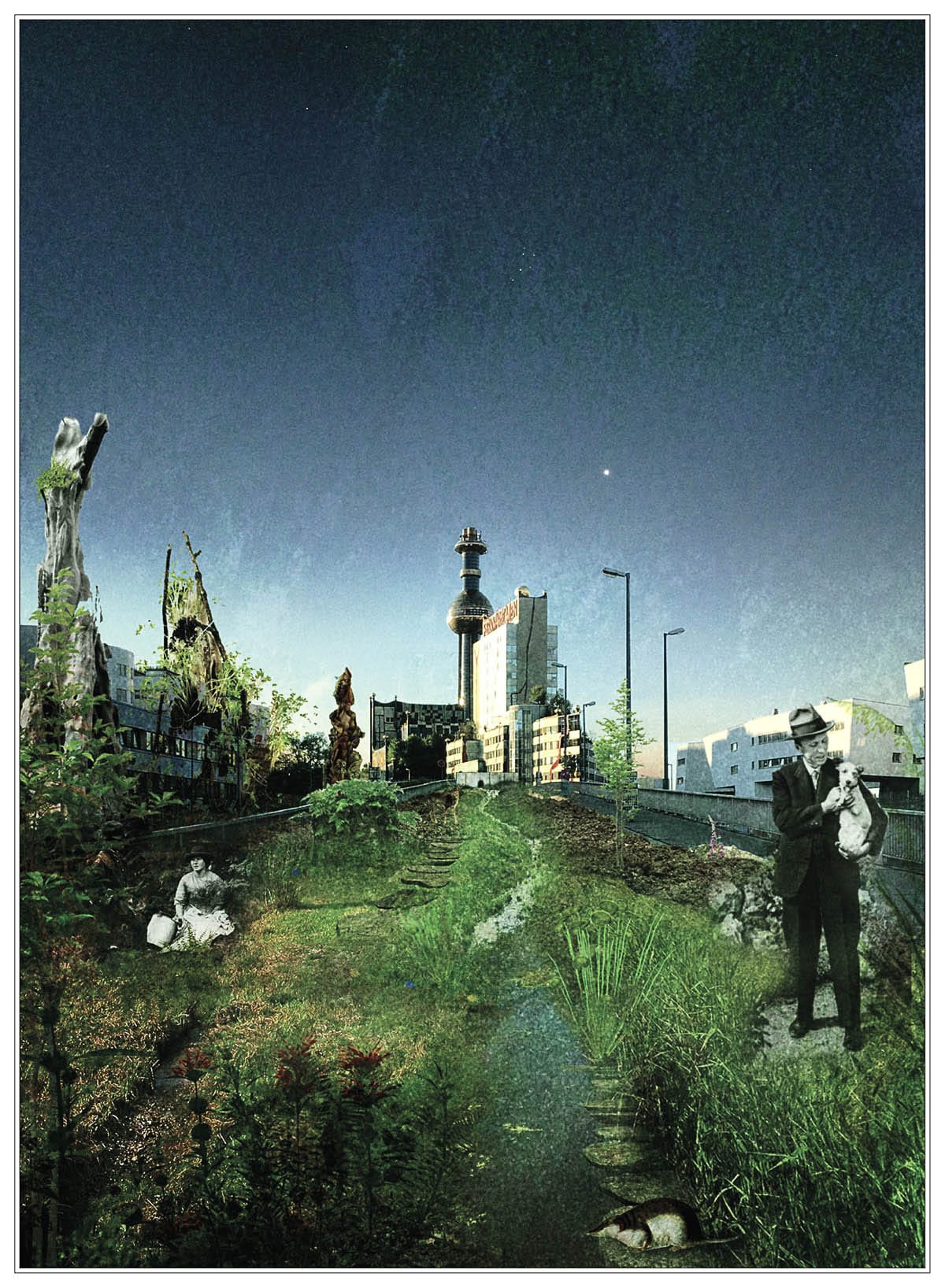
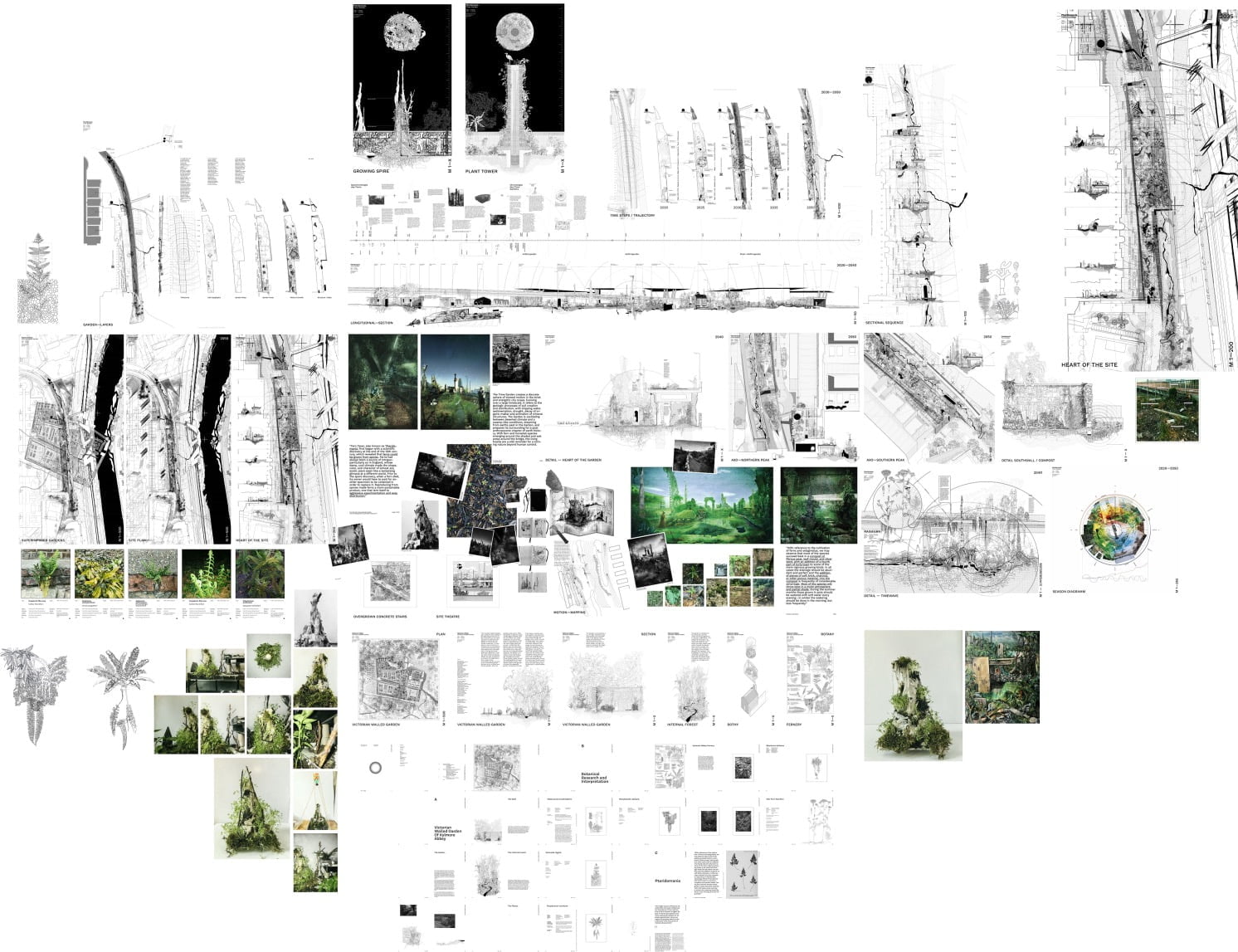
Site Inspection / Research
